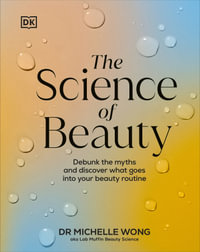
Morphic Resonance
The Nature of Formative Causation
By: Rupert Sheldrake
Paperback | 1 September 2009 | Edition Number 4
At a Glance
Paperback
$36.40
Aims to ship in 10 to 15 business days
When will this arrive by?
Enter delivery postcode to estimate
- Explains how past forms and behaviours of organisms determine those of similar organisms in the present through morphic resonance
- Reveals the non-material connections that allow direct communication across time and space
In the years since its first publication, Sheldrake has continued his research to demonstrate that the past forms and behaviour of organisms influence present organisms through direct immaterial connections across time and space. This can explain why new chemicals become easier to crystallise all over the world the more often their crystals have already formed, and why when laboratory rats have learned how to navigate a maze in one place, rats elsewhere appear to learn it more easily. With more than two decades of new research and data, Rupert Sheldrake makes an even stronger case for the validity of the theory of formative causation that can radically transform how we see our world and our future.
About the Author
Rupert Sheldrake, Ph.D., is a former research fellow of the Royal Society and former director of studies in biochemistry and cell biology at Clare College, Cambridge University. He is the author of more than 80 technical papers and articles appearing in peer-reviewed scientific journals and 10 books, including The Presence of the Past, The Rebirth of Nature, and Seven Experiments That Could Change the World.
Industry Reviews
ISBN: 9781594773174
ISBN-10: 1594773173
Published: 1st September 2009
Format: Paperback
Language: English
Number of Pages: 352
Audience: General Adult
Publisher: PARK STREET PR
Country of Publication: GB
Edition Number: 4
Dimensions (cm): 22.9 x 16.0 x 2.1
Weight (kg): 0.45
Shipping
| Standard Shipping | Express Shipping | |
|---|---|---|
| Metro postcodes: | $9.99 | $14.95 |
| Regional postcodes: | $9.99 | $14.95 |
| Rural postcodes: | $9.99 | $14.95 |
How to return your order
At Booktopia, we offer hassle-free returns in accordance with our returns policy. If you wish to return an item, please get in touch with Booktopia Customer Care.
Additional postage charges may be applicable.
Defective items
If there is a problem with any of the items received for your order then the Booktopia Customer Care team is ready to assist you.
For more info please visit our Help Centre.
You Can Find This Book In
This product is categorised by
- Non-FictionScienceBiology, Life SciencesLife Sciences in GeneralEvolution
- Non-FictionMind, Body, SpiritUnexplained Phenomena & the Paranormal
- Non-FictionScienceBiology, Life SciencesLife Sciences in GeneralEcological Science
- Non-FictionScienceScience in GeneralPopular Science
- Non-FictionSociety & CulturePopular Beliefs & Controversial Knowledge
























